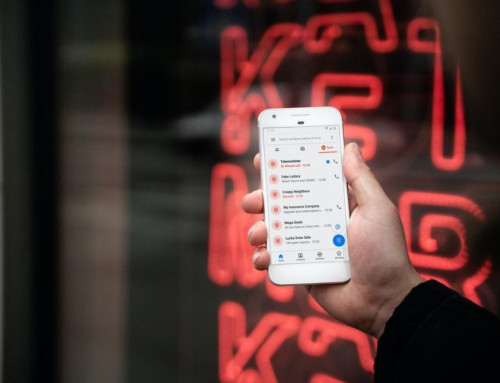Federal
AI in the Employment Context
Last May, the US Equal Employment Opportunity Commission (EEOC) issued nonbinding guidance on how federal anti-discrimination laws may apply to employers’ use of artificial intelligence (AI). Among other things, this guidance suggests that employers assess whether the AI tools they plan to use in connection with making decisions about hiring, promoting, terminating, and the like have an adverse effect on any particular protected group.
Applicants and Employees with Visual Disabilities
The EEOC also issued technical assistance explaining how the Americans with Disabilities Act (ADA) covers job applicants and employees with visual disabilities. Among other things, the EEOC discusses some of the reasonable accommodations that are available, many of which are free or low cost.
These include screen readers (or text-to-speech software); optical character recognition (OCR) technology that can create documents in screen-readable electronic form from printed ones; systems with audible, tactile, or vibrating feedback, such as proximity detectors (which can alert individuals if they are too close to an object or another person); website modifications; and written materials in more accessible formats, such as in large print, braille, or a recorded format.
New Posters
If you’re an employer subject to the federal Fair Standards Labor Act (FLSA) – and most are – you should make sure that you’ve posted the April 2023 version of the FLSA “Employee Rights” poster.
There is also an updated version of the Family and Medical Leave Act (FMLA) poster.
I-9 Verification
Employers are required to inspect a new employee’s identity and employment eligibility documents on or before the third day of employment. Due to the COVID-19 pandemic, employers were permitted to review such documents virtually from March 20, 2020 to July 31, 2023.
Employers must now ensure they complete physical inspection of any documents that were inspected virtually and update their I-9s no later than August 30, 2023.
There is, however, a new remote-verification option available to employers participating in the E-Verify system. This process applies only to workers hired on or after August 1, 2023, with one exception.
It can be used for those hired during the pandemic if the employer was enrolled in E-Verify when the employee was hired, created an E-Verify case for that employee, and performed a remote document inspection for the employee in completing the Form I-9 under the temporary COVID-19 measures.
Note, too, that there is a new I-9 form, intended to reduce the opportunity for error in completing the form.
Worker Classification
The National Labor Relations Board (NLRB) has returned to its former standard for classifying workers, which means workers are more likely to be considered employees rather than independent contractors.
The current test considers ten different factors, none of which are decisive:
(1) who controls the details of the work;
(2) whether the work performed is a distinct occupation or business;
(3) whether the work being performed is typically done under the supervision of an employer;
(4) whether the work requires special skill;
(5) who supplies the tools or equipment;
(6) the length of the engagement;
(7) whether compensation is based on time spent or completion of a job;
(8) whether the employer is in the business of work that is performed;
(9) whether the parties believe they have created an independent contractor relationship; and
(10) whether the employer is in business.
Under the prior test most recently in effect, the NLRB had held that entrepreneurial opportunity for gain or loss was the primary factor in determining worker classification.
Workplace Policies
The NLRB also made it clear that employers must ensure that their policies do not have a “reasonable tendency” to dissuade employees from exercising their Section 7 rights under the National Labor Relations Act (NLRA).
In other words, employers are not permitted to adopt overbroad policies that chill employees’ exercise of their Section 7 rights. Employers should, therefore, ensure that all rules establish a legitimate and substantial business interest, and that a more narrowly tailored rule won’t work just as well.
Religious Accommodation Obligations
In June, the US Supreme Court unanimously ruled that under Title VII, religious accommodations must be provided to employees and applicants unless the employer is able to prove that the resulting burden is “substantial in the overall context” of the employer’s business. Previously, an employer did not have to provide accommodation if the accommodation would cause more than a de minimus (minimal) burden.
Under the new standard, to avoid having to provide a religious accommodation, the employer must show the burden of granting an accommodation would result in substantial increased costs in relation to the conduct of its particular business, taking into account all relevant factors, including the practical impact of the particular accommodations at issue in light of the nature, size, and operating cost of the employer.
Oregon
Oregon Employers and Wildfires
Oregon law allows eligible employees to use protected sick time when a public official determines that the Air Quality Index (AQI) is at a level where continued exposure would “jeopardize the health of the employee.” An eligible employee may also use protected sick time when either their home or the employer’s place of business is subject to a level 2 (SET) or level 3 (GO) evacuation order.
In addition, the Oregon Occupational Safety and Health Administration (OR-OSHA) requires Oregon employers to protect their employees from exposure to wildfire smoke.
Paid Leave Oregon
The Paid Leave Oregon (PLO) program is now accepting applications for paid time off benefits. PLO allows eligible Oregon employees to take paid time off for family leave, medical leave, and safe leave. When an employee is approved by the Oregon Employment Department for PLO leave, all employers must grant the time off, regardless of an employer’s size and location.
**********
Whether you are an employee or an employer, please feel free to contact us if you have any questions about the above or any other employment-law issues.
For more information about employment law, see Employment Law (in Plain English)®, co-authored by members of this law firm.
The book is available through Skyhorse Publishing, Amazon, Barnes & Noble, Powell’s Books, and Bookshop (an online bookstore that allows you to support your favorite independently owned bookstore).
Photo by Anton Dmitriev on Unsplash






